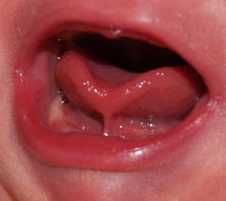Tongue tie - Ankyloglossia
Does tongue tie affect breastfeeding?
When a tongue tie does need to be divided?
Tongue-tie is a common but often overlooked disorder in babies. It is present since birth and occurs when a small frenulum (which should have disappeared during the development of the fetus), remains in the underside of the tongue, restricting its movements.
In the 90s, the incentive to breastfeeding again brought up the controversy about the tongue-tie and how it interferes in the way of sucking, chewing, and talking.
Some professionals keep thinking that the tongue does not exist, does not affect breastfeeding, will correct itself, or stretch or tear without treatment, which does not cause discomfort for the mother and does not affect speech.
There are varied forms of tongue-tie. Many of them don’t need surgical division. So, it is important to make a test that considers anatomical and functional aspects to get the right approach. Also, maternal anatomy and an interview with the breastfeeding mother are an important part of the clinical evaluation.
In the past, the presence of tongue-tie was only noticed by visual inspection. Nowadays, an assessment tool (BTAT/TABBY) has been developed for obtaining an objective score of tongue-tie severity and to identify which babies would benefit from a frenotomy. This clinical scoring system has been successfully used by midwives, health care assistants, and medical staff in many countries.



